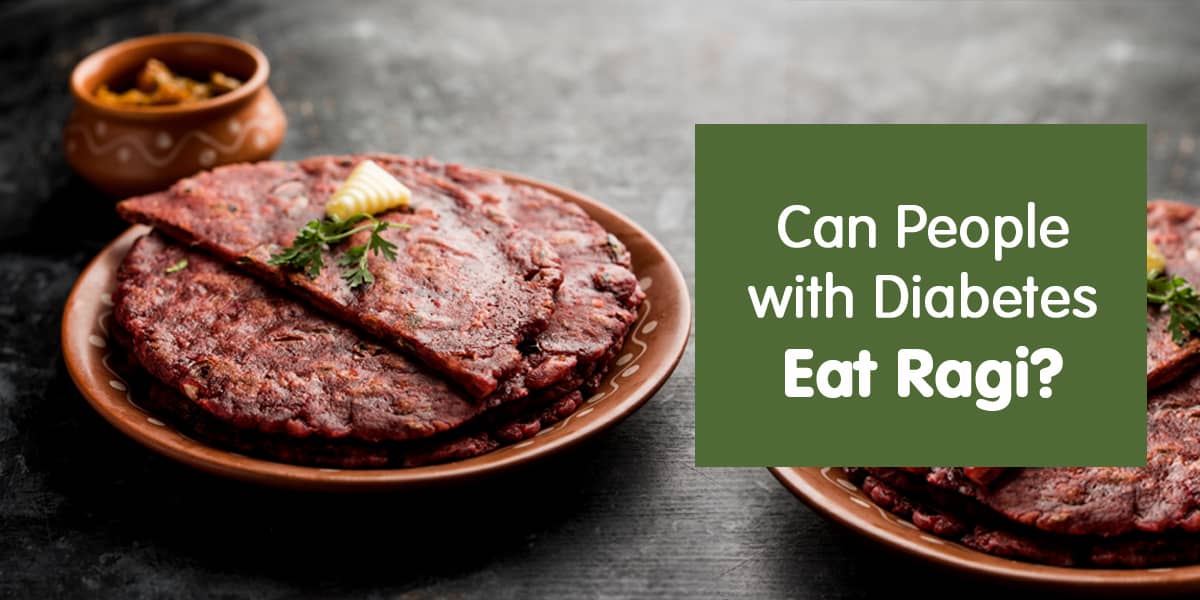Doctors and health experts have always recommended a strict routine and a healthy diet with regular workouts to keep diabetes under control. While taking regular medicine is important, diet and exercise also play a crucial role. After the riveting benefits of okra water, methi seeds, and karela juice, the next big question is – Is ragi a superfood for type 2 diabetes?
Ancient grains were the best medicines, that’s why there is a rising interest these days. One such grain is Ragi which was a staple in our traditional diet. Also known as finger millet or Nachni, ragi is gluten-free and is a rich source of good carbohydrates and fiber. Since it is rich in fiber, it can help delay the absorption of glucose in the blood. It further reduces the chances of blood sugar spikes which is dangerous for diabetics.
Because it is gluten-free, Ragi is highly suitable for lactose-intolerant people. It is rich in fiber minerals and amino acids; this makes it a great choice for diabetics. It is also rich in polyphenols that help in controlling blood sugar levels.
Also Read: Is coconut water safe for diabetes?
Ragi and diabetes
Diabetes is a chronic condition that affects more than 422 million people worldwide. It can lead to several serious complications including infections, blindness, kidney disease, heart disease, and stroke. Research shows that diet plays a crucial role in the management of diabetes.
Diabetics have to be extra careful when it comes to choosing their meals. Research shows that ragi is safe in diabetes and it can help stabilize blood sugar levels. It may also help relieve inflammation and oxidative stress.
Research says that foods like Ragi and other varieties of millet are a fine choice for people suffering from diabetes. Because of its high content of fiber, minerals, and amino acids, Ragi is an excellent choice. Studies also show that ragi improves blood sugar and cholesterol levels.
Also Read: Neem tea for diabetes patients
Ragi For Diabetes – Research
Doctors often advise diabetics to consume ragi instead of white rice and wheat. This is because it helps in maintaining blood sugar and cholesterol levels. Further, the presence of high dietary fiber in ragi helps keep the hunger satiated for a long and helps maintain the blood sugar in control.
In another study, it was concluded that millets hold a key to the well-being of those suffering from diabetes or who are at a high risk of diabetes. Another study examined the effect of millet-based diets on diabetic patients. Consumption of millet-based diets resulted in significantly lower plasma glucose levels. This might have been because of the higher fiber content of millet as compared to rice and wheat.
The lower glycaemic response of whole finger millet-based diets may also have been due to the presence of antinutritional factors in whole finger millet flour which are known to reduce starch digestibility and absorption.
Here are some more studies that prove the efficiency of Ragi in the management of diabetes.
Ragi fights Inflammation
Research shows that Ragi may reduce oxidative stress and inflammation. Inflammation and oxidative stress are known factors that can increase the risk of several conditions including diabetes, heart disease, and cancer.
Ragi controls Blood sugar levels
Research reveals that Ragi is rich in polyphenols. Polyphenols are rich in antioxidants that help, prevent and treat diabetes, as well as some of its complications. According to some research, the higher fiber content in Ragi affects blood sugar levels.
How to eat ragi in diabetes?
Ragi has been a traditional staple in Indian diets for over a millennium. Thanks to the wide variety of Ragi recipes it can be made into roti, pasta, cake, and cookies. Finger Millet is commonly used in the form of flour. One of the simplest and healthiest ways to consume millets is by soaking and boiling them to make porridge.
How much Ragi should a diabetes patient consume?
Doctors recommend 10 to 20 grams of Ragi in the daily diet to gain benefits.
Final Verdict – Ragi is a superfood for Type 2 Diabetes
Type 2 diabetes is a lifestyle disorder that affects millions of people all around the world. Diabetes needs proper management for the prevention of other complications. Foods that have a low glycaemic index and high fiber content prevent the spiking of blood sugar levels. They help in reducing the risk of developing Type 2 diabetes and preventing the complications that come along with this disorder.
Ragi is an excellent choice of food to counter the effects of Type 2 diabetes. Studies have proven that regular consumption of Ragi can reduce the risk of developing diabetes by 30%. Apart from that, Ragi has several other benefits for digestion, bone, and kidneys. Ragi also helps prevent obesity, provides energy, and averts chronic diseases.
So, whether you are a diabetic or not, including Ragi in your diet is always a good idea!


4 comments
[…] Also Read: Is Ragi is a superfood for diabetes? […]
[…] Also Read: Is Ragi an amazing superfood for type 2 diabetes? […]
[…] Ragi for Type 2 Diabetes […]
[…] millet, or ragi – If you are looking for a diet to complement your gym sessions, then add ragi to your diet. It is a very rich source of calcium. It is also rich in iron, protein, and […]